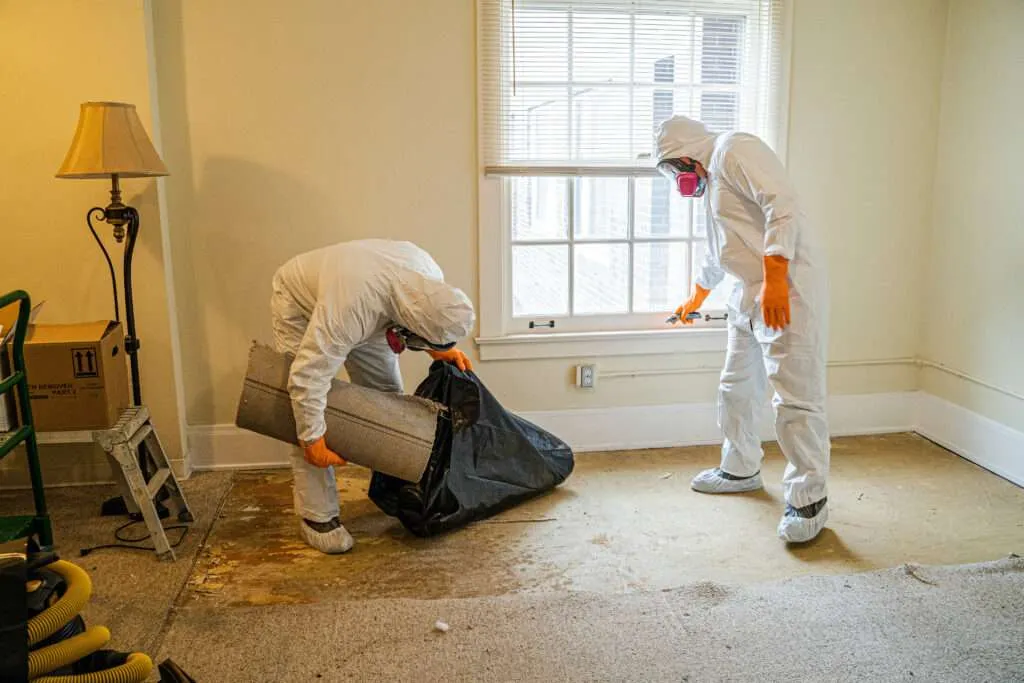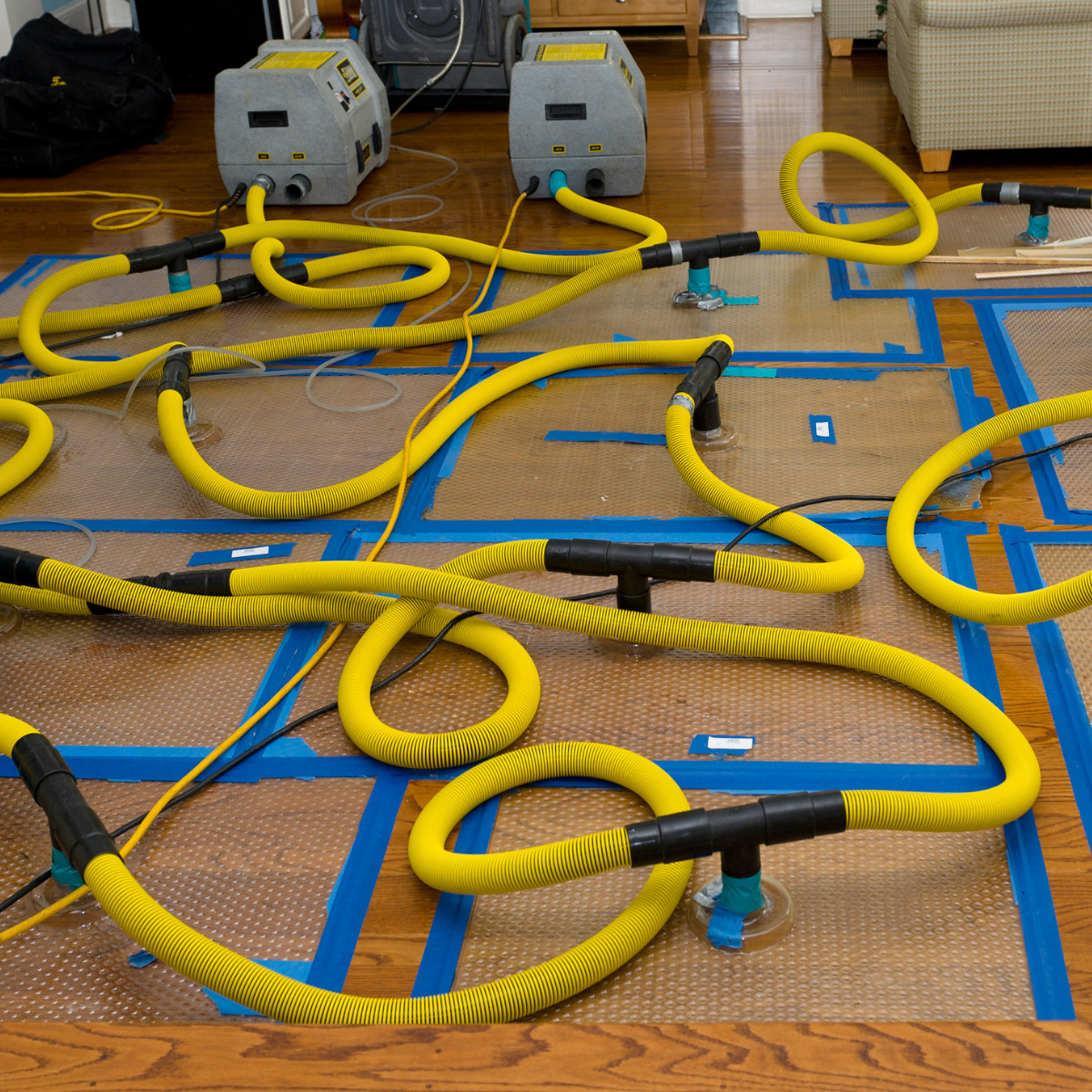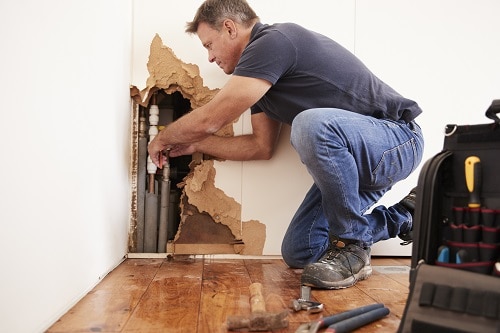Water Damage Restoration 101: Understanding the Process and Price
Water damage can strike unexpectedly, leaving home owners in a state of confusion. Recognizing the restoration procedure is vital for effective healing. From reviewing the damage to selecting the best company, each step affects the total outcome and cost. Aspects such as the type of water damage and seriousness also play a substantial role. What are the certain methods utilized in restoration, and just how can one prepare for possible expenses?
Types of Water Damage

Preliminary Analysis and Examination

Water Removal Techniques
Adhering to the preliminary evaluation, efficient water removal methods are used to mitigate damage and avoid more problems. These techniques entail using customized equipment such as industrial-grade vacuums and submersible pumps - Water Damage Restoration. The choice of approach depends on the quantity of water present and the sort of materials impacted. For standing water, completely submersible pumps are usually utilized for rapid removal, while vacuums are suitable for extracting water from carpetings and furniture. Additionally, progressed techniques like water removal floor coverings may be employed for hard-to-reach locations - Water Damage Restoration. The goal is to get rid of as much water as feasible, decreasing the possibility for mold and mildew development and structural damage. Prompt and efficient water extraction is vital in the general water damage restoration process
Drying Out and Dehumidification Process
As soon as the water removal is total, the drying out and dehumidification process becomes critical to recovering the afflicted location. This phase commonly utilizes industrial-grade dehumidifiers and air movers to properly decrease moisture degrees. The dehumidifiers attract in damp air, getting rid of excess humidity, while air moving companies circulate air to speed up dissipation. Monitoring tools is commonly made use of to track humidity and temperature level degrees, making sure excellent drying out problems. The period of this procedure can differ depending on the level of the water damage and ecological variables. It is vital to extensively dry all impacted materials, consisting of wall surfaces, floor covering, and home furnishings, to avoid mold development and structural damage. Proper implementation of this step is crucial for a successful repair end result.
Cleaning and Sterilizing Damaged Areas
A thorough preliminary analysis and examination of influenced areas is crucial to determine contamination degrees once the drying procedure is total. Water Damage Restoration. Effective cleansing techniques and appropriate items need to after that be utilized to remove debris and stains. Sanitization and disinfection methods are essential to ensure that harmful pathogens are removed, restoring the area to a secure condition.
Preliminary Assessment and Inspection
Prior to beginning any type of reconstruction efforts, an extensive first evaluation and evaluation of the influenced locations are essential for efficient cleaning and disinfecting. This procedure involves determining the extent of water damage, identifying the resource of the water intrusion, and assessing the materials affected. Inspectors typically seek indicators of mold development, architectural honesty concerns, and damaged personal belongings. The analysis additionally includes inspecting dampness degrees using specialized devices to assure no surprise water pockets continue to be, as these can bring about further difficulties. Documenting the searchings for is essential for intending the next actions in the repair process. A comprehensive preliminary evaluation allows repair experts to devise a targeted method for effective cleansing and disinfecting, inevitably minimizing damage and health risks.
Cleaning Up Methods and Products
Effective cleaning and disinfecting of water-damaged locations require a range of products and techniques customized to the details materials influenced. For porous surfaces like drywall and carpeting, removal methods are necessary to get rid of excess wetness, adhered to by deep cleansing with specialized detergents. Non-porous materials such as tile or metal can be cleansed using commercial-grade cleansers that successfully eliminate contaminants. Vapor cleansing is another efficient technique, particularly for carpetings and upholstery, as it uses heats to remove microorganisms and mold and mildew (Flood Cleanup Services). Furthermore, green products are progressively popular for their safety and efficacy - Water Damage Restoration. Inevitably, choosing the appropriate cleansing techniques and products not only guarantees immediate cleanliness but also aids in stopping more damage and health threats related to water invasion
Sanitization and Disinfection Techniques
When resolving water damage, appropriate sanitization learn the facts here now and sanitation methods are necessary to ensure the safety and security and health of the afflicted setting. After preliminary cleansing, surface areas have to be treated with appropriate anti-bacterials to get rid of virus, mold and mildew, and germs that flourish in wet conditions. Usual methods include making use of EPA-approved chemical disinfectants, which can be used via splashing or wiping strategies. Additionally, ultraviolet (UV) light systems can properly disinfect locations by reducing the effects of bacteria without extreme chemicals. The choice of technique usually depends upon the kind of products affected and the degree of contamination. Eventually, comprehensive sanitization not just restores a risk-free space yet also helps prevent future health risks connected with lingering dampness and mold and mildew growth.

Fixings and Restoration Options
Evaluating the damage caused by water direct exposure is vital for determining the suitable fixings and remediation choices. Property owners may encounter different issues, including damaged drywall, warped flooring, and jeopardized architectural components. Depending upon the degree of the damage, repair services might include changing sections of drywall, mounting brand-new flooring, or strengthening structural light beams. In situations of severe damage, full substitute of damaged materials may be needed. Additionally, expert restorers frequently suggest using dampness meters to assess hidden wetness levels prior to picking the very best strategy. It is very important to act promptly to avoid mold and mildew growth and additional deterioration. Picking the right options not only recovers the property yet also assures long-lasting safety and performance.
Variables Affecting Restoration Costs

The extent of water damage straight influences the restoration costs house owners can expect to incur. Aspects such as the resource of the water, the duration of direct exposure, and the damaged products greatly influence pricing. Tidy water damage from a damaged pipeline is usually less expensive to restore contrasted to damage caused by sewage. Additionally, the degree of contamination dictates the requirement for specialized cleaning and disposal services, better enhancing expenses. Geographical place additionally plays a function, as local labor prices and availability of reconstruction services can vary. The necessity of the feedback impacts costs; quicker treatments normally lead to reduce overall costs by protecting against further damage. Comprehending these elements is essential for property owners when estimating restoration expenses.
The 3 main types of water damage are categorized based on contamination degrees: clean water, grey water, and black water. A complete initial assessment and assessment are essential steps in the water damage reconstruction process. For standing water, completely submersible pumps are typically used for fast elimination, while vacuums are ideal for removing water from carpetings and upholstery. The degree of water damage directly affects the reconstruction sets you back homeowners can expect to sustain. Clean water damage from a broken pipe is normally much less expensive to restore compared to damage created by sewer.